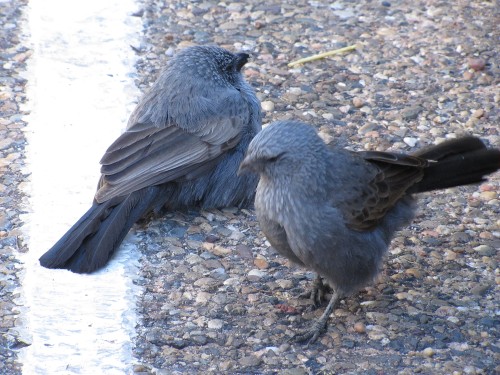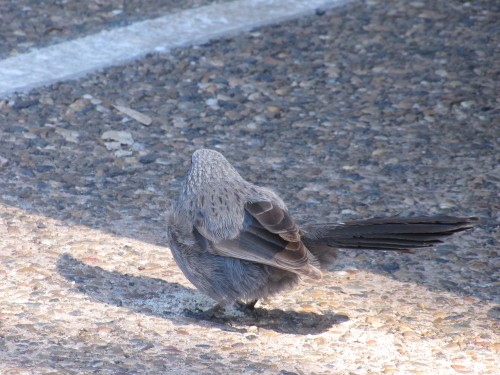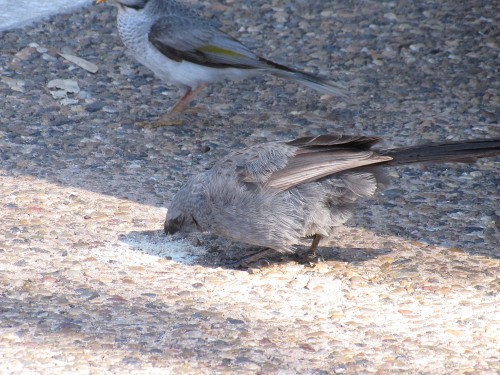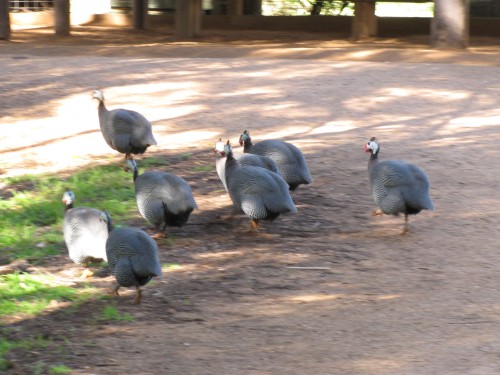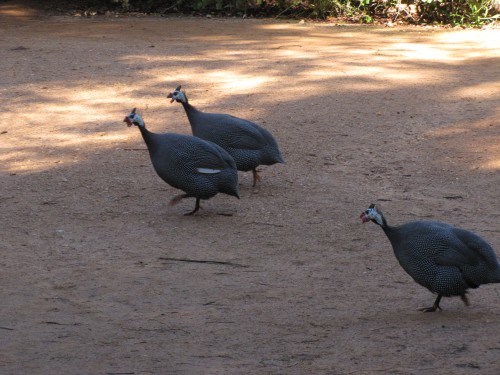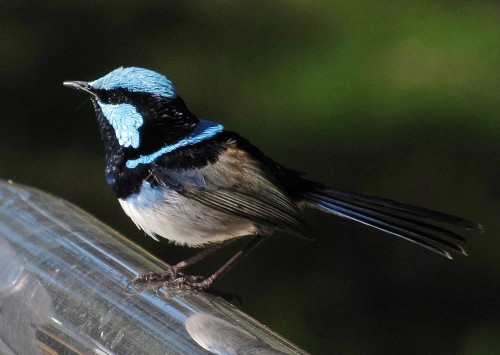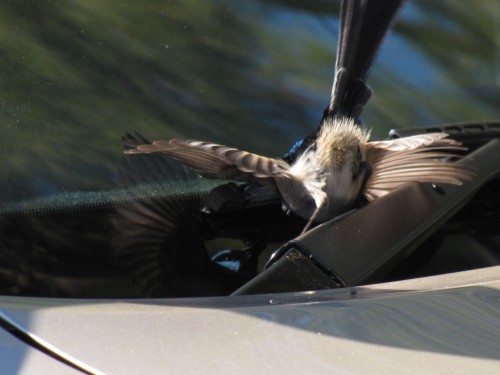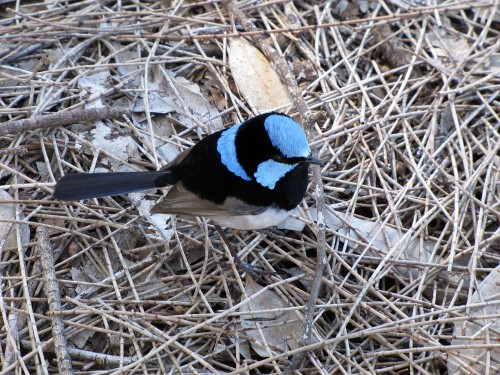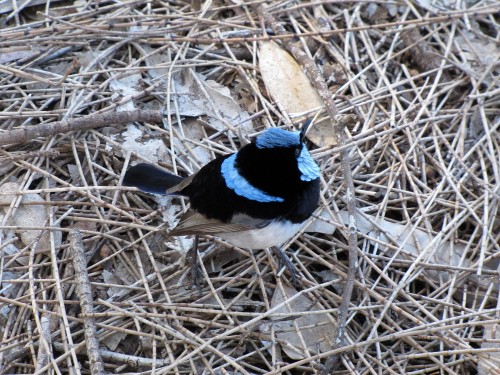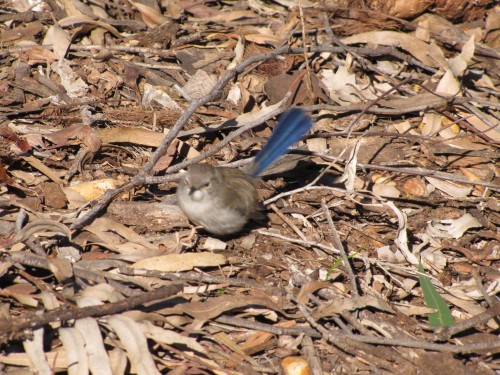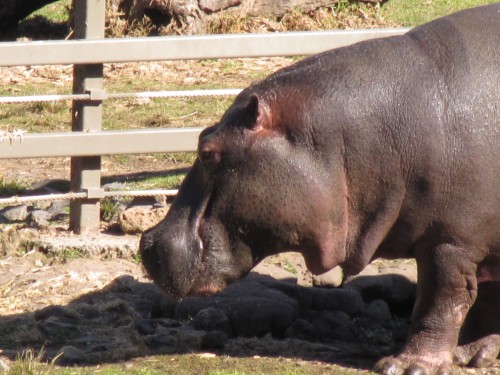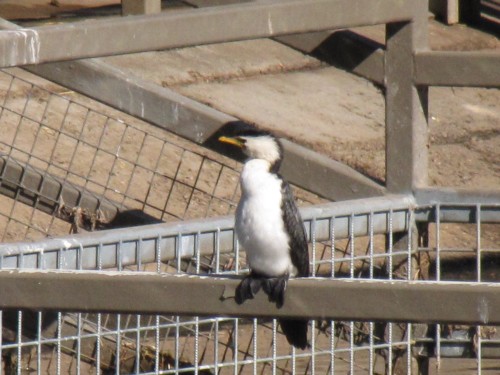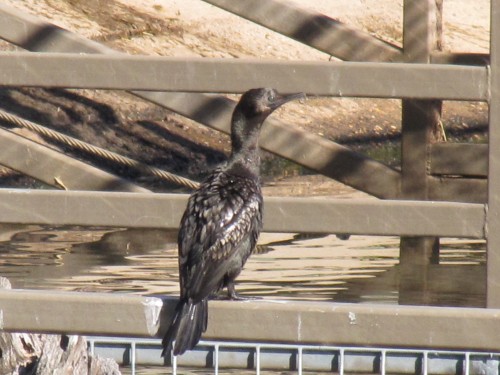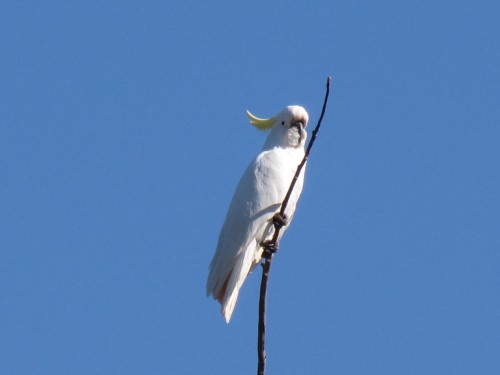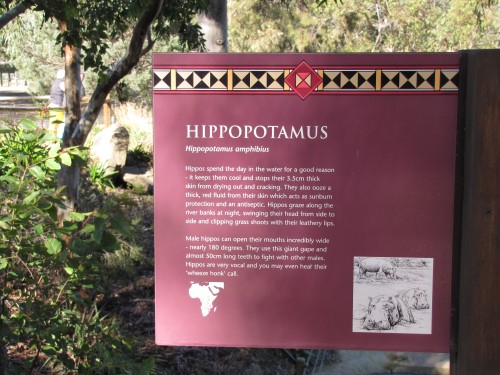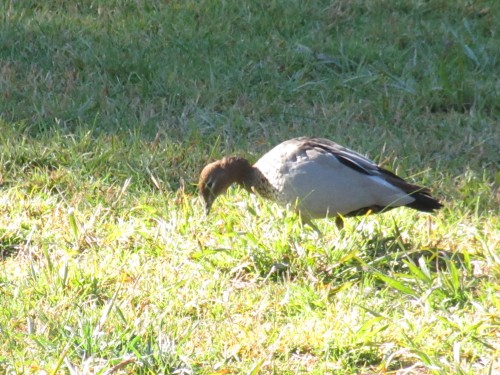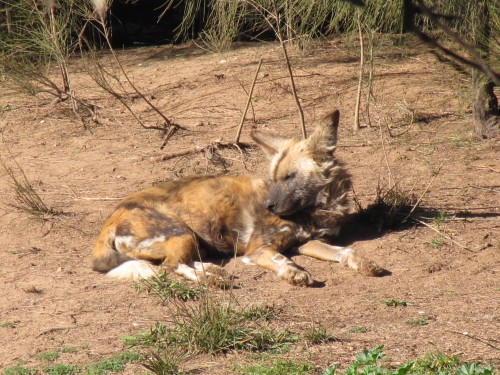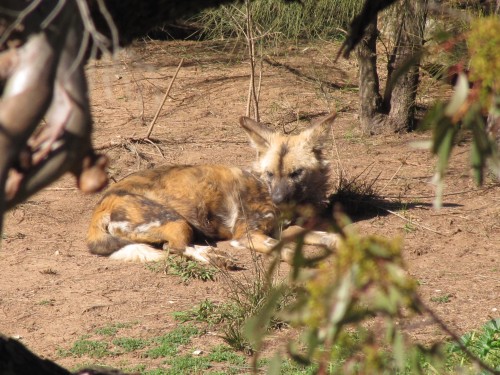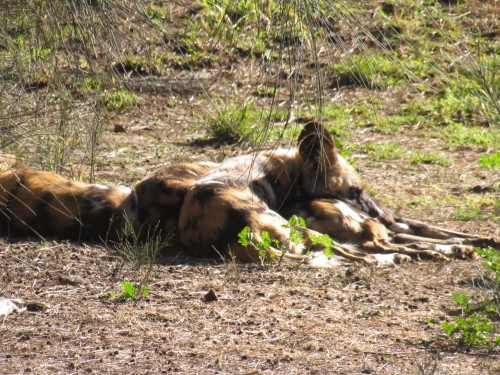Apostlebirds by the dozen
Apostlebirds are not all that common in South Australia. In fact, they are confined to a few locations in the mid-north of the state plus one site I know of near the eastern border south of Renmark. In parts of New South Wales, however, they are widespread and common in many places. They are also very confiding birds and will happily share their little patch of bushland – if you share some of your morning or afternoon tea.
On our recent visit to the Western Plains Zoo at Dubbo I was surprised at just how common they actually are, but then there is plenty of food for the taking, both in the animal enclosures and in the picnic areas where human food scraps are in abundance. It is not surprising then that I was able to get at least several good photos during our visit.
Apostlebirds are not the most photogenic birds found in Australia, being only dull grey with some black patches. What they lack in colour they certainly make up for with their gregarious nature. Because of this nature they certainly are one of my favourites and I always look out for them wherever we travel.
Helmeted Guineafowl
This is not a sight you see very often in Australia. Helmeted Guineafowl are an introduced species present in a few scattered locations around the continent. They are nowhere in abundance, only existing in a few locations and usually as a result of an escape from a farm, park or zoo.
This small group obviously have the run of the grounds of the Western Plains Zoo on the outskirts of Dubbo. I am assuming that this population is a self-sustaining group living permanently in the grounds of the zoo and feeding upon food left for other birds and animals.
This species is native to Africa but is often kept in small domesticated populations in various places around Australia. I assume that there are also some self-sustaining feral populations too.
My next door neighbour has about a dozen which often stray onto our property. I wrote about them here.
Great birding moments #34: Superb Fairy-wren
Two days ago I wrote about the birds we saw at the hippo enclosure when we visited the Western Plains Zoo in Dubbo recently. One species I didn’t mention was the Superb Fairy-wren because I wanted it to have its own post. Today’s photos feature a male bird in full breeding plumage plus one shot of a female (see below).
There were several birds, both male and female, hopping around the viewing platform at the hippo enclosure. I tried hard to get a few photos but they were constantly on the move. This is typical of this species; it makes effective photography a real challenge.
As we returned to our car – the open range zoo is a “drive yourself” experience – a male Superb Fairy-wren was fluttering around the car next to ours. The photo above shows him on the roo bar at the front of the vehicle. He was very agitated and ignored me only a metre or so away from him. He then flew many times at his reflection in the car’s window (see photo below).
A number of Australian bird species display this aggressive behaviour. Thinking that their reflection is an enemy attempting to take over its territory, the male bird will attack its own image many dozens of times. Not only do they attack the reflection in the windows of a car, they can also be attracted to the outside mirrors, shiny hub-caps, shiny bumper-bars and any reflective surface. A few years ago our resident Willie Wagtail was attracted to the mirrors on our car. Day after day for periods up to a half hour it would attack the mirror, leaving a very unpleasant residue on each mirror in the process.
Some of the species which display this behaviour include Australian Magpies, Willie Wagtails, Magpie Larks, finches, honeyeaters, and ravens and crows. A few years ago we had a Little Raven in our garden which was annoyed by its reflection in our bedroom window glass. Every morning around dawn it would come and peck loudly on the glass. Being suddenly woken in this fashion at such an early hour was not very pleasant, and we were pleased when it moved on and no longer came knocking well before our normal time of rising.
This post is #34 of a series called Great Birding Moments. I think the title is self explanatory. Sadly, it is over six years since the last in this series, so I think I will have to rectify that in the coming months. You can access a list of the articles by clicking here.
Birds of the hippo enclosure
I think that the hippopotamus is a fascinating animal, but I will resist the temptation to write about it. After all, this site is about Australian birds, so… here we go.
The hippo enclosure a the Western Plains Zoo near Dubbo in New South Wales is a huge one – much larger than enclosures you will see in most zoos. It gives the animals plenty of room to move and live in a more natural environment than would otherwise be the case in captivity. As a part of this provision, the hippos in this zoo have a large water feature to enjoy – it’s really a small lake and they must feel really at home.
Being a water feature, it naturally attracts water loving birds. Two which were hard to overlook were the Little Pied Cormorant and the Little Black Cormorant, both shown in photos below. I’m not sure how many fish they would find in the murky water of the hippo lake, but there they were.
As we were watching the cormorants and the hippos I noticed a Sulphur-crested Cockatoo perched high in the branches of a nearby tree. I’m not sure if the cockatoo was checking out the availability of water from the hippo lake, or looking for a hollow to make a nest. Perhaps it was on guard, ready to warn the flock feeding on the ground of approaching danger.
Watch your back, duck
I was amazed at the danger this Australian Wood Duck had placed itself into. It was quietly grazing on the grass in the African Wild Dog enclosure at the Western Plains Zoo in Dubbo, and with its back to the pack sunning themselves about 30 metres away. They are cunning hunters and quite capable of sneaking up on an unsuspecting, tasty meal like a duck. I guess that they are well fed and have no need to chase after wildfowl, or any other birds which stray into their enclosure.
This reminded me of a guided tour we had a some years ago through our local Monarto Zoo, just 10km from my home here in Murray Bridge. The tour bus was slowly moving through the cheetah enclosure when the guide announced that the cheetahs loved running at full speed and catching the local ravens or magpies before they could get airborne again.
I decided then that I would never try to outrun a cheetah!
